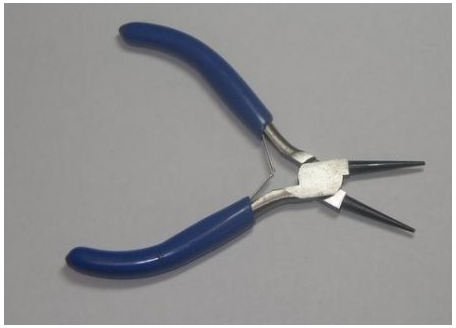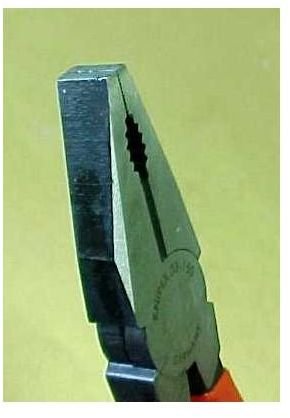Learn Mechanical Engineering: Hand Tools and Pliers
Introduction
We have studied several types of spanners and wrenches in our previous articles of this series. Now we will proceed to learn about the various types of pliers and their common uses.
Pliers
Pliers come in a variety of flavours as we will see now and take a look at their shapes as well.
Plain Pliers
These are the most common type of pliers and surely you must be having one in your tool box. Plain pliers consist of two jaws which are hinged at a common point and are slightly tapered at the ends having very small teeth on the inside of the jaws. These teeth are more for having a firm grip on anything held between the jaws rather than having any purpose to cut that object. Some pliers like the one shown in the figure below does have arrangements for cutting wires as well both in the middle of the jaws as well as in the back side of the jaws.
Round Nose Pliers
These pliers are quite similar in construction to the above pliers but the only difference is that their jaws are in the form of a long round sections which taper towards the outside hence giving it the appearance of a nose. Their main use consists of doing wire related work such as bending or twisting of the wires and the round shape of the jaws ensures that the work is done smoothly rather than having any kinks or bends in the wire due to the edge shaped jaws in the plain pliers.

Electrician’s Pliers
These pliers aren’t much different from straight jaw pliers except that they have a strong insulation covering the entire handle having high shoulders towards the end which separate the metallic part from the handle. This ensures that during the application of pressure involving any live wires by the electrician, the hand does not slip by chance and touch the metallic part. So you can see that they are not much different from the plain pliers shown above but only a special case of them, where plain pliers can have several other shapes as well and may not be insulated at the handles.

Slip Joint Pliers
As you can see from the picture, these pliers are also similar except that instead of a fixed hinge their jaws can move at the hinge as well thus giving room for adjustment depending on the size of the object to be held between them. This certainly gives a better grip over large sized objects as compared to normal straight jaw pliers

We will study about a few more types of pliers in the next article of the series.
This post is part of the series: Learn Mechanical Engineering at Home Series
Have you ever wondered what mechanical engineering is all about? I cannot make you a certified mechanical engineer but certainly you can learn a lot about mechanical engineering by reading this Learn from Home series on mechanical engineering.
- Learn Mechanical Engineering at Home Series – 1
- Learn Mechanical Engineering at Home Series – 2 (Spanners)
- Learn Mechanical Engineering at Home Series – 3 (Spanners)
- Learn Mechanical Engineering at Home Series – 4 (Pliers)
- Learn Mechanical Engineering at Home Series - 5 (More About Pliers)
- Learn Mechanical Engineering at Home Series 6 – Hand Tools (Hammers)
- Learn Mechanical Engineering at Home Series – (Hand Tools)
- Learn Mechanical Engineering at Home Series – (Special Types of Files)
- Learn Mechanical Engineering at Home Series – How to use a file?
- Learn Mechanical Engineering at Home Series – What is a Surface Plate?
- Learn Mechanical Engineering at Home Series – What is a Hack Saw?
- Learn Mechanical Engineering at Home Series – The Engineer’s Vice
- Learn Mechanical Engineering at Home Series – Punches and Drifts
- Learn Mechanical Engineering at Home Series – Inside and Outside Calipers
